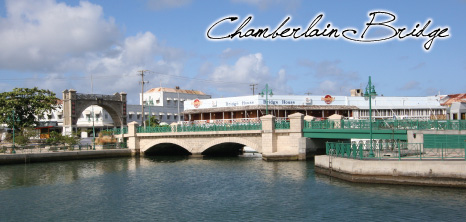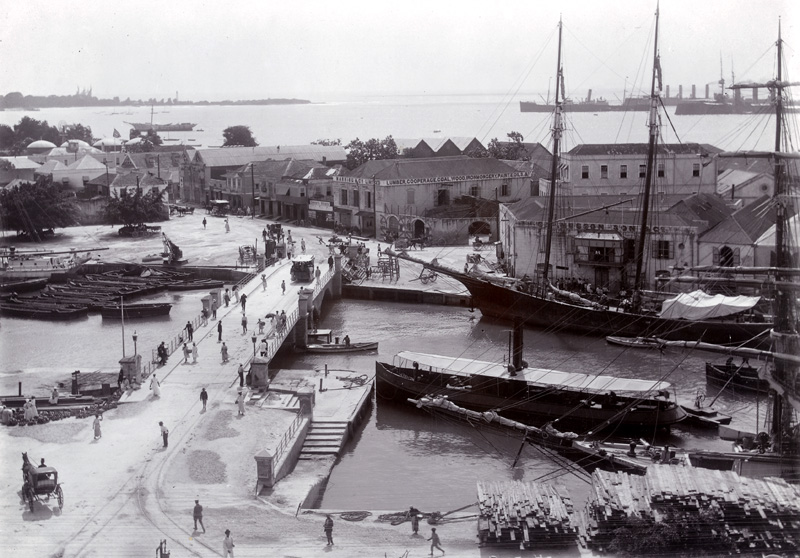|
Chamberlain Bridge (Swing Bridge)This horizontally swinging 39 foot steel bridge was built in 1872, so as to provide a path across the Careenage for small vessels entering the 'inner basin'. When traffic approached the bridge, two men would turn a shaft and open the bridge to allow traffic through. Just about where the Chamberlain Bridge is, was the previous site of the 'Indian Bridge'.
In 1628, on arrival to the island of Barbados, a group of British settlers were greeted with a wooden structure across the water. It is believed that a group of indigenous people to the Caribbean known as Arawaks were the ones to create the bridge. Subsequently, the area that they came upon in Bridgetown was called Indian Bridge. Sometime after 1654, the British removed this primitive like structure and constructed a new bridge over the Careenage. The area became known as the town of Saint Michael and then later went on to be called Bridgetown.
Barbados became an independent nation on November 30, 1966 and this arch was constructed in 1987 in acknowledgement of such an achievement.
In Bridgetown, Barbados, there’s a present day feature sitting on the Chamberlain Bridge known as the Independence Arch. This arch was built in 1987 to commemorate 21 years of independence gained on November 30th, 1966.
|




 In 1872, it was finally replaced as a swing bridge at a great cost. During the poor years suffered by the colonies, Barbados benefitted tremendously from financial contributions made by Joseph Chamberlain, who at the time was Secretary of State for Colonies. The bridge was repaired and as a result of his monetary contributions, in 1900, in his honour, the bridge was named after him. The
In 1872, it was finally replaced as a swing bridge at a great cost. During the poor years suffered by the colonies, Barbados benefitted tremendously from financial contributions made by Joseph Chamberlain, who at the time was Secretary of State for Colonies. The bridge was repaired and as a result of his monetary contributions, in 1900, in his honour, the bridge was named after him. The